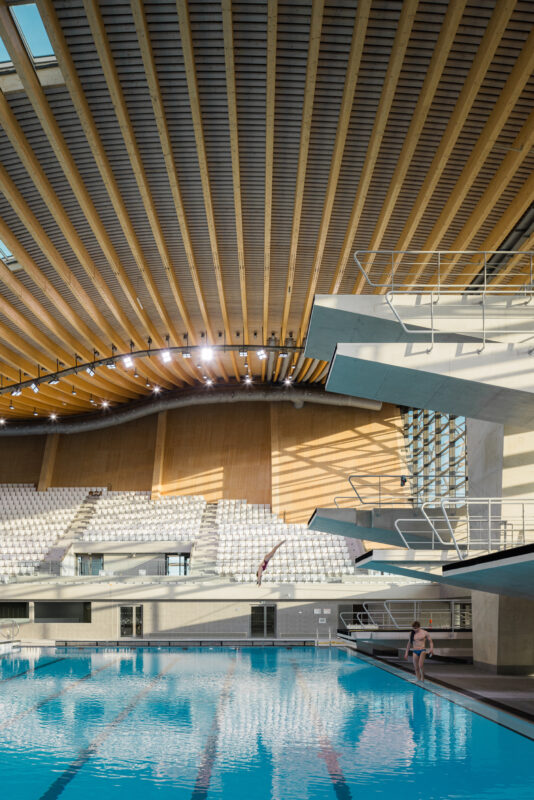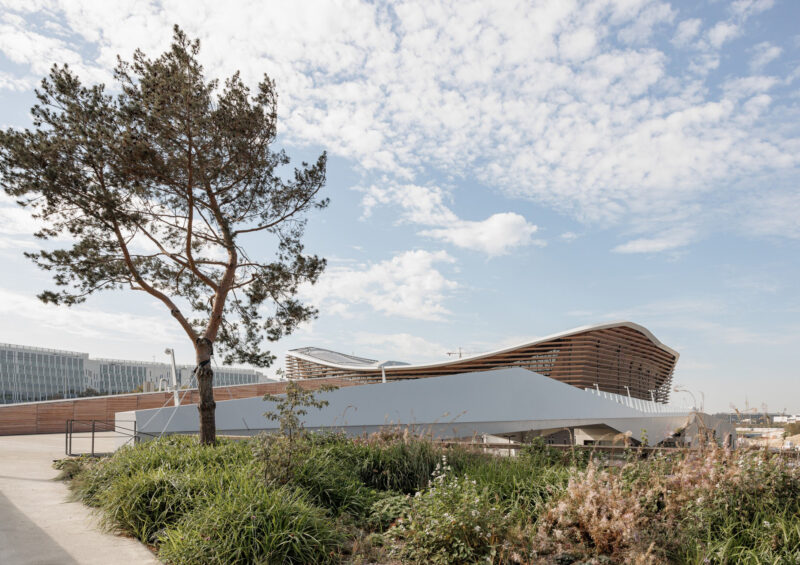Talking Timber – Expert Column by Cecilia Gross in Architecture Magazine
16 February 2021

Cécilia Gross is one of the experts talking timber in the latest issue of Architecture Magazine.
“Hailed as one of the most environmentally friendly building materials, timber is versatile, strong, renewable, and beautiful. Mass timber construction continues to be on the rise with advocates claiming it as part of a climate change solution. However, wood is often associated with deforestation, and the frequency of forest fires have increased in recent years. Many also question whether the logging and manufacturing required to produce building materials outweigh any benefits. And so, we ask our experts…”
Is building with timber really sustainable?
Read Cécilia’s answer and the choices we made for the Aquatics Centre Paris 2024:
‘The Covid-19 pandemic has thrown into sharp relief the need for integrated green recovery plans that deal with all the major challenges we face as a society. Think of interconnected issues such as global warming, loss of biodiversity, depletion of raw materials and pollution. These challenges are strongly related to problems with current land use, infrastructure, power generation, water management and economic activities such as agriculture, industry and transportation. These problems are also reflected in the construction industry’s use of timber as a material.
We know that biobased materials, such as wood mitigate the impact of climate change. Unlike concrete and steel they reduce a buildings CO2 footprint by storing carbon and being renewable. Yet its sustainability as a material is also reliant on a number of factors including clever forestry, careful sourcing, skilful engineering and experienced design. Considering that the construction sector is responsible for 40% of CO2 emissions, how can we make the best use of timber to maximise its sustainable potential? In our design for the Olympic Aquatics Centre for Paris 2024 – the only permanent building to be constructed for the games – the lifespan of the building was a key element in choosing wood as a material. It’s made entirely of laminated timber, this not only helps to reduce CO2 emissions during construction but as a part of a legacy building, it also locks up CO2 for decades to come. This includes future reuse as it was designed so that most of the wood can be reused and recycled for hundreds of years without being limited by form or dimensions.
Alongside sourcing wood from sustainable forests in Europe, we also came up with design solutions to minimise the amount of material required for construction. For the roof we used an efficient system of suspended timber girders set one metre apart and spanning 89 metres, which enabled us to reduce material use. The roof also has a shape that follows as closely as possible the required free space above basins and tribunes. Compared to regular solutions, this dramatically reduces the volume of the hall and the amount of energy required to heat the Aquatic Centre, adding to the building’s overall sustainability.
The use of timber for sustainable construction will be an important part of the green recovery, but we have to take elements such as sourcing, manufacture and transport into account. It’s also not a panacea. Timber isn’t the best solution for every situation such as building cores or foundations. . The starting point has to be: the right material in the right place. For those areas where we still need concrete and steel the industry should be creating innovative solutions that continue drive down CO2 emissions.’
Published in Architecture Magazine – issue March 2021
Longread: The visionaries behind the Alienware Training Facility
Envisioning the future of our cities: from Le Corbusier to VenhoevenCS on ArchDaily





